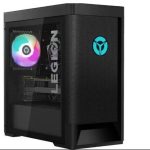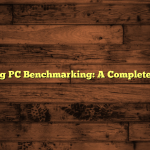Choosing the Best Gaming PC Case
Introduction
Hey there, gamer! 🎮
Let me guess—you’ve picked out your graphics card, drooled over the Ryzen vs. Intel debate, and now you’re staring at your online cart wondering which PC case won’t suffocate your components or make you look like you built a time machine from 2012.
Sound familiar?
I’ve been there.
Let’s face it: buying a PC case is like picking the right armor in an RPG—it doesn’t just protect your core, it defines your style, speed, and survivability. In this 2025 guide, I’ll walk you through everything: sizes, cooling, materials, and even real case examples from the much-talked-about ScatterVolt Tier List.
This isn’t just another article. This is your warrior’s scroll to building a beast of a rig without overspending.
💡 Key Takeaways – TL;DR Summary
Let’s summarize what you need to know before buying a case:
“Your PC case is the armor of your gaming rig—choose one that defends, breathes, and flexes with your future upgrades.”
-
Airflow > Looks: Don’t sacrifice performance for RGB.
-
Included fans save money.
-
USB Type-C is non-negotiable in 2025.
-
Build quality matters. Avoid plastic-heavy frames.
-
Always compare what’s included vs. what you need to add.
-
🧱 Go Mid-Tower for best size & flexibility.
-
❄️ Airflow is king. Don’t ignore cooling.
-
💡 Look for 3+ pre-installed fans.
-
🔌 USB Type-C is essential.
-
🌈 Tempered glass & RGB = sweet bonus.
-
🧠 Top picks: HAF 500, Anttech Flux, Antec C5.
Types and Sizes of Gaming PC Cases
Choosing the right case size is like choosing the size of your home—bigger isn’t always better, but it gives you options.
Here are the three main categories:
1. Full Tower
-
Height: 22–24+ inches
-
Great for: Advanced users with multiple GPUs, custom water loops, and full-size motherboards (E-ATX).
-
Pros: Excellent airflow, room for 420mm radiators, storage galore.
-
Cons: Heavy and takes up lots of space.
2. Mid Tower (Most Popular)
-
Height: 17–20 inches
-
Supports: ATX, Micro-ATX, and Mini-ITX motherboards.
-
Pros: Best balance of size, price, and airflow. Perfect for 90% of gamers.
-
Cons: Less space for extreme builds.
3. Mini Tower / Small Form Factor
-
Height: Usually under 15 inches.
-
Best for: Desk warriors with tight space.
-
Pros: Lightweight and minimal.
-
Cons: Requires careful planning. Not ideal for beginners.
Tip: If you’re unsure, go with a Mid-Tower case. It’s versatile, affordable, and great for airflow.
Cooling Performance: Why Airflow is King
You know what kills performance faster than a cheap PSU?
Bad airflow.
Overheating components throttle performance and shorten lifespan. That’s why cooling should be non-negotiable.
Airflow Design Basics
Most modern cases use a front-to-back airflow design:
-
Intake Fans (Front/Bottom): Pull in cool air.
-
Exhaust Fans (Top/Rear): Push out hot air.
But wait—some elite cases like the Cooler Master HAF 500 even place a 120mm fan directly under the GPU to cool your graphics card more effectively. Now that’s next-level thinking!
Liquid Cooling Support
Want whisper-quiet operation or planning to overclock your CPU?
Then consider a case that supports liquid cooling:
-
240mm–420mm radiators.
-
Front/top mounting.
-
Enough clearance for tubes and pumps.
Real Case Example
The Phanteks XT Pro Ultra includes RGB fans that deliver excellent airflow while staying quiet—if you configure them correctly in the BIOS or with third-party software.
Material Quality & Build Design
Would you live in a house made of cardboard?
No? Then don’t build your rig in a cheap plastic case either.
Key Material Features
-
Steel/Aluminum Chassis: Durable and strong.
-
Tempered Glass Side Panels: Stylish and resistant to scratches.
-
Rubber Grommets: Keeps cables tidy and improves airflow.
-
Tool-less Design: Makes upgrades easy and fast.
Why This Matters
Not only do better materials make your build easier, but they protect your expensive hardware. When you’re dropping hundreds (or thousands) on a GPU, your case should be able to back it up—literally.
Connectivity & Expansion Options
How many USB ports do you really need?
Answer: more than you think.
Front Panel I/O
-
USB Type-C: Must-have in 2025.
-
USB 3.0 / 3.2 Gen 1/2: Great for fast storage.
-
Audio Jacks: For headsets and mics.
-
Fan Controls / LED buttons: A bonus for aesthetics.
Expansion
-
PCIe Slots: Look for 7+ in mid/full towers.
-
Storage Bays:
-
2x 3.5″ HDD = Good.
-
2–4x 2.5″ SSD = Ideal.
-
-
Clearance for GPUs: Watch the GPU length!
| Expansion Features | Recommended |
|---|---|
| USB Type-C Port | ✅ Yes |
| 7+ PCIe Slots | ✅ Yes |
| At least 2 SSD Mounts | ✅ Yes |
| Tool-free drive bays | ✅ Optional |
Aesthetics & Customization
Let’s be honest…
You want a case that doesn’t just run cool—it needs to look cool.
RGB, tempered glass, clean cable management—it’s all about showing off your build.
RGB & Lighting
-
ARGB (Addressable RGB): Individual control over lighting effects.
-
Fan RGB vs Strip RGB: Combine both for a light show.
Build Presentation
-
Glass Side Panels: Make your GPU and RAM glow.
-
Shrouds: Hide your PSU mess.
-
Cable Routing Channels: Keep it tight and tidy.
Top-Rated PC Cases (Based on 2025 Tier List)
Thanks to ScatterVolt’s ULTIMATE PC Case Tier List, we now know what’s worth buying under $120 and what to avoid.
“Airflow is the most important thing for a gaming PC case—more than looks or RGB.” – ScatterVolt
📈 Best Airflow Cases Under $120
| Case Name | Price | Highlights |
|---|---|---|
| Cooler Master HAF 500 | ~$100 | 2x 200mm fans, 1x 120mm GPU fan, top-tier airflow. |
| Anttech Flux | ~$90 | Strong thermal performance, great for ATX builds. |
| 903 Max | ~$60 | Insane airflow value at this price. |
| Land Cool 207 | ~$80 | Solid airflow, unbeatable budget performance. |
🌈 Best Cases with Pre-installed ARGB Fans
| Case Name | Included Fans | Notes |
|---|---|---|
| Antec C3 | 4 ARGB | PSU shroud cutout improves airflow. |
| Antec C5 | 7 ARGB | Full package—no need to buy extra fans. |
| Bitfenix Nova Mesh | 4 ARGB + Fan Ctrl | MicroATX option with great RGB integration. |
| DIY PC (Version 2) | 3 ARGB | Affordable, well-built for entry builders. |
Cases to Avoid (Per Tier List)
Not all budget cases are created equal. Some look good but fail the airflow test.
❌ Excluded from the Tier List:
-
Over $120: Automatically considered top-tier but beyond this guide’s scope.
-
No Included Fans: Cases like Fantex NV5 or Montek King 95 Pro seem cheap, but after adding fans, cost goes up.
Price vs Performance: What’s the Sweet Spot?
Let’s break down what you’re getting across price tiers.
| Price Range | What You Get |
|---|---|
| <$60 | Basic airflow, fewer fans, fewer USB ports. |
| $60–$90 | Good airflow, 2–4 fans, USB 3.0, some RGB. |
| $90–$120 | Excellent airflow, ARGB, tempered glass, USB-C, tool-less. |
Pro Tip: The sweet spot for most gamers in 2025 is the $80–$110 range.
-
Price Considerations
The price varies a lot. From less expensive models under $100 with basic features to premium ones over several hundred dollars with advanced cooling design, quality materials, but also a lot of customization.
For instance:
| Price Range | Typical Features | Ideal For |
| Under $100 | Basic fan support, limited I/O, minimal cable grommets | Builders with a small budget |
| $100 – $200 | Multiple pre-installed RGB fans, tempered glass panel, good airflow | Gamers who want a balance of price and performance |
| Above $200 | Advanced water-cooling, superior build materials, extensive customization | Enthusiasts who demand the best |
The Phanteks XT Pro Ultra is a good example of a case in the budget-to-mid-range. It has RGB fans and tempered glass for about $80, making it good for those who want cooling and looks without spending too much.
Final Thoughts
By now, you’ve learned more about PC cases than 90% of the people on Reddit. (Congrats!)
This isn’t just about airflow, USB ports, or even RGB lighting-it’s about creating a machine that reflects your gameplay, your personality, and your future plans.
Remember:
A powerful rig deserves a worthy case.
Make it breathe. Make it beautiful. Make it yours.
Choosing a gaming PC case means balancing size with how much you want to expand the PC and how well you want it to perform. You should also think about cooling, how well it’s built, what connections it has, how it looks, next to your budget.
Full towers are for those who need the most space. They are good if you plan to use multiple GPUs. Mid-towers are versatile and fit most high-end, single GPU builds comfortably.
New cooling ideas, like putting bottom intake fans right below the GPU, help keep the temperature down.
Materials, like steel frames and tempered glass, make the case last longer but also look good.
In the end, picking a gaming PC case that’s made for your hardware will make sure your PC is stable, lasts a long time, operates quietly, as well as gives you an enjoyable gaming experience. These are all things that serious gamers value.
FAQ
What size PC case should I choose?
You should select a size that accommodates your components while considering available space and desired expandability. Full towers offer the most room, mid-towers balance size and features, and mini-towers are best for compact builds.
How important is airflow in a gaming PC case?
Airflow is very important. Good airflow helps keep your components cool, preventing overheating and maintaining performance during gaming. Cases with strategic fan placement and support for liquid cooling solutions offer the best thermal performance.
What features should I look for in a high-quality gaming PC case?
Look for sturdy construction (steel frame, tempered glass panel), good cable management options, support for multiple fans or liquid cooling, adequate I/O ports, as well as sufficient expansion slots for future upgrades.
Are ARGB fans worth the price?
Yes. You’re saving $50+ if your case already includes 4+ ARGB fans.
Should I go for a full tower?
Only if you plan on doing custom loops, dual GPUs, or extensive storage builds.
Is USB Type-C required?
In 2025? Yes. Most motherboards support it. You’ll regret not having it later.
Resources & References:
- https://www.tomshardware.com/reviews/best-pc-cases,4183.html
- https://gamersnexus.net/cases/best-pc-cases-2024-80-800-airflow-cable-management-thermal-leaders
- https://gamemaxpc.com/pc-case-news/3975.html
- https://www.microcenter.com/site/mc-news/article/computer-case-sizes-explained.aspx
- https://www.youtube.com/watch?v=0oltpvXr54c
- ScatterVolt. (2024). The ULTIMATE PC Case Tier List for 2025. YouTube.
- PCBuilds.gg – Recommended Build Configurations
- Cooler Master Official Site – HAF Series Specifications
- Phanteks – XT Pro Ultra Product Page





